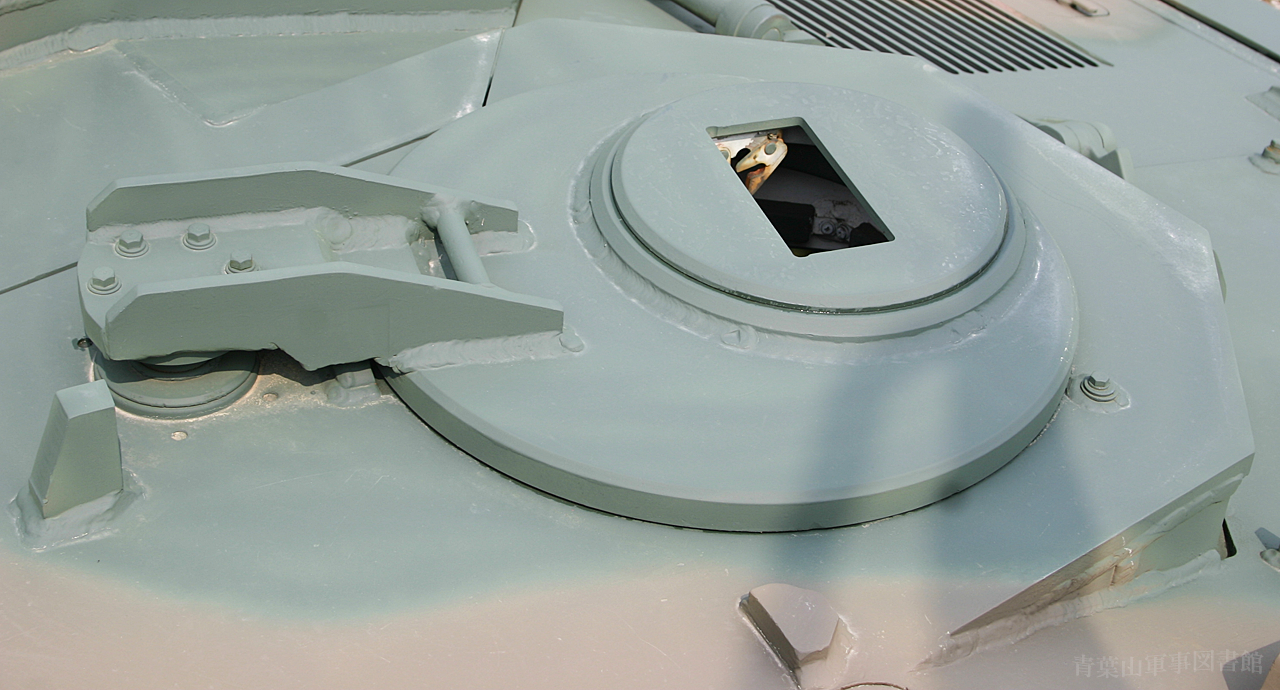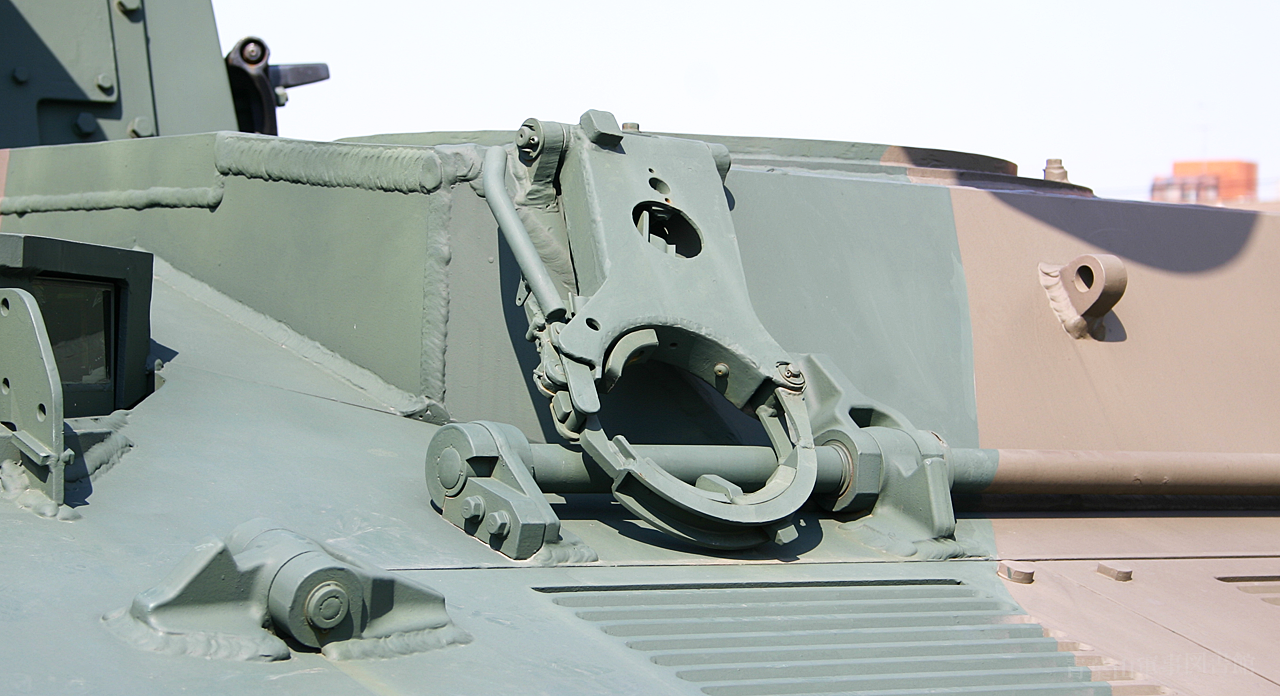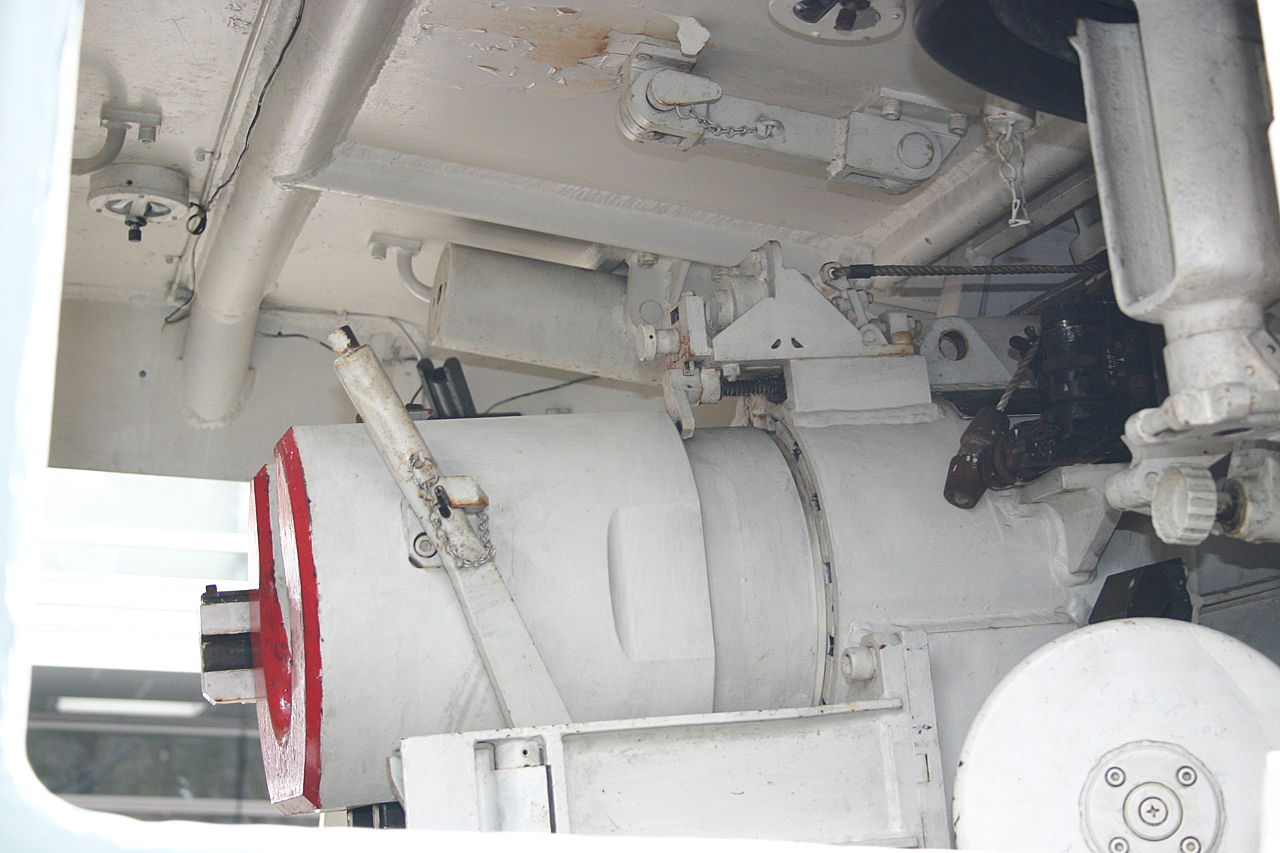- Yes!
- No.
Type 74 SPH, Tank Destroyer, Japan, Rank 3
One relatively unknown equipment in the Japan Ground Self-Defense Force is the Type 74 self-propelled 105mm howitzer. Only a total of 20 units were produced, and they were deployed to only one battalion, the “117th Artillery Battalion, 4th Artillery Group.” Soon after transitioning to a 155mm caliber for artillery, this self-propelled howitzer quickly became outdated. All 20 units were retired in the year 2000.
The development of the Type 74 self-propelled 105mm howitzer was driven by the need for both maneuverability and a fast firing rate to support front-line units. In contrast to the 155mm class, the 105mm howitzer offered easier ammunition supply and quicker position occupation and removal times. The decision was made to develop two configurations: a maneuverable 105mm self-propelled gun for direct support and a larger 155mm self-propelled gun for general support.
Development began slightly earlier than the Type 75 self-propelled 155mm howitzer, with finalized specifications in 1966. It became a commissioned research project in 1967, with Nippon Steel Corporation responsible for turret development. Chassis development, assigned to Komatsu Works, produced prototypes in 1970. The strategy likely involved starting with the smaller 105mm prototype before progressing to the larger 155mm version. Limited manufacturers capable of large-caliber artillery production, like Nippon Steel Corporation, led to a rational use of resources. Field trials were conducted in 1972, and the Type 74 was officially adopted in 1974.
The structure of the chassis
Type 74 self-propelled 105mm howitzer utilizes components from the Type 73 armored vehicle, with the engine, transmission, and steering mechanism as its core. However, as Komatsu Works was the development company, the appearance of the prototype chassis resembles more the SUB-IIs of Komatsu’s make than the SUB-Is of Mitsubishi, which served as the basis for the Type 73 armored vehicle.
The front right side of the chassis houses the driver’s seat, equipped with three periscopes. The driver’s seat features the familiar two control levers from the Type 73 armored vehicle, with an instrument panel mounted on the right side. The instrument panel includes a large speedometer and tachometer, along with smaller gauges such as an oil temperature gauge and various switches. The driver’s hatch opens horizontally, similar to that of the Type 75 130mm self-propelled multiple rocket launcher (Type 75 MSSR). The front left side is the engine compartment, and it is front-wheel drive.
The rear of the chassis serves as the combat compartment, housing a turret that can rotate 360 degrees. The front right side connects to a passage following the driver’s seat, with a right-opening door provided at the rear. Inside this door, a handheld fire extinguisher is mounted. The engine is equipped with a Mitsubishi-made 4ZF 2-stroke V4 air-cooled diesel engine.
This engine belongs to the ZF series, similar to the 6ZF used in the Type 75 self-propelled 155mm howitzer and the 10ZF used in the Type 74 tank. As mentioned earlier, the Type 73 armored vehicle also uses the same 4ZF engine. The ZF series engine combines cylinders of the same displacement in any desired number to achieve the required output, following the concept of controlled diesel engines during World War II.
The “4” in 4ZF represents four cylinders, and as the ZF series engine produces 75hp per cylinder, the total output is 300hp. The fuel tank has a capacity of 410 liters, providing a range of 300 km. However, this figure excludes the 80 liters from additional fuel canisters (commonly known as jerry cans), which would extend the range to approximately 380 km. The vehicle can use various fuels, including regular diesel, gasoline, and JP-4 (jet fuel for aircraft).
The self-weight is 13.3 tons, with a total weight of 16.3 tons, an increase of about 3 tons compared to the 13.3 tons of the Type 73 armored vehicle. The power-to-weight ratio has slightly worsened, with 18.4 hp/ton compared to the 22.6 hp/ton of the Type 73 armored vehicle. As a result, the maximum on-road speed has decreased to 50 km/h from the Type 73 armored vehicle’s 60 km/h. The transmission and steering mechanisms are from the same series as those used in the Type 73 armored vehicle, but the minimum turning radius is somewhat larger at 8.0 meters.
The electrical system of the Type 74 self-propelled 105mm howitzer differs from the 12V system of the Type 75 MSSR, as it features a 24V system with two 24V batteries. The chassis is constructed with welded ballistic aluminum plates. By deploying folded floating screens around the vehicle and attaching a slightly modified floating kit, it can travel on water at a speed of 6 km/h.
The structure of the turret section is as follows:
- Bulletproof Aluminum Turret: Similar to the body, the turret is made of bulletproof aluminum. On the top, there is a 12.7mm heavy machine gun M2 with a protective shield.
- Gunner’s Seat and Commander’s Seat: On the front right side of the turret is the gunner’s seat, equipped with a rotation handle on the front right and an elevation handle on the left. In front, there is a panoramic periscope protruding through the ceiling hatch, visible through rubber boots. Behind the gunner’s seat is the commander’s seat.
Directly above, there is a rear-opening hatch for the commander, with a periscope attached between the bifurcated base of the gun mount. Between the gunner’s and commander’s seats on the turret’s side, there is a single-opening hatch. The hatch behind it serves as a ventilator.
On the opposite side of the combat compartment, to the left, a foldable bench seat is installed facing right. Two occupants can sit here. Just above this seat, there is an entry/exit hatch on the ceiling, and a single-opening hatch is also attached to the left side of the turret.
The position for mounting the J1 and M26 fuze-setting devices, used for fuse calibration, is on the left side sleeve inside the combat compartment. J1 is used for the calibration of the 71-type CVT, and M26 is used for other mechanical and percussion-delay fuzes. In front of them, a familiar NBC filter box with two round handles, similar to the one mounted on the Type 73 armored vehicle, is installed.
On the side of the combat compartment, three racks for the 64-type 7.62mm rifles, the crew’s personal firearms, are mounted on the right, and one on the left. These racks store 43 rounds each, with storage provided in various locations such as the rear of the turret beyond the canvas-covered breech for case ejection, racks beside the combat compartment rear door, and under the combat compartment floor. The 105mm howitzer mounted is developed by Nippon Steel Corporation, as mentioned earlier, and it is the first post-war fully domestic artillery.
The barrel length is 30 calibers, and it uses a cartridge case. The breech mechanism is a vertical sliding block type and is semi-automatic, while the recoil mechanism is a concentric liquid spring type, with a maximum recoil length of 30.5cm. The maximum range is 14,458m, and the maximum muzzle velocity is 645m/s. The elevation range is +1,290 mils (approximately 73 degrees), and the depression range is -110 mils (approximately 6 degrees), with the handle operating 10 mils (approximately 0.56 degrees) per rotation.
The turret, as mentioned earlier, can rotate 360 degrees, with a manual rotation of 10 mils (approximately 0.56 degrees) per handle rotation and a powered rotation allowing a full 360-degree rotation in 20 seconds. The firing rate is up to 10 rounds per minute. The Type 74 self-propelled 105mm howitzer’s aiming devices include the same panoramic sight and L-shaped sight as the Type 75 self-propelled 155mm howitzer.
The panoramic sight has a magnification of 4x, a field of view of 10 degrees, an objective lens diameter of 16mm, and elevation angles of 300 mils (approximately 16.9 degrees), with azimuth markings on the reticle. The sight support is M76. The L-shaped sight has a magnification of 4x, a field of view of 10 degrees, and an objective lens diameter of 35mm, with vertical markings on the reticle. Similar to the Type 75, it allows adjustments of 10 mils (approximately 0.56 degrees) in each direction.
The crew consists of four members, and as mentioned earlier, there are seats for a maximum of five. However, the crew includes a commander, gunner, driver, and three gunners (No. 1 to No. 3), making a total of six personnel. Therefore, when fully occupied, one person would need to stand while riding. In practice, due to staffing considerations, it is typically operated with around four crew members, and this has not posed any issues.
The Type 75 Self-Propelled Howitzer is positioned alongside the Type 74 Self-Propelled Howitzer, providing a clear visual representation of their substantial vehicle dimensions.

The Type 74 SPH is equipped with a 30 caliber 105mm howitzer manufactured by Japan Steel Works (JSW) and is competible with American 105mm ammunition:
- High-Explosive (HE) Rounds:
- M1 HE Round:
- Projectile Weight: 15.0kg
- Complete Round Weight (with fuse): 19.2kg
- Projectile Length: 49.5cm
- Filling: TNT (2.13kg) or Composition B (TNT 40%, RDX 60%)
- Effective Range: Frontal width 30m, depth 20m
- Type 74 HE Round:
- Projectile Weight: 14.2kg
- Complete Round Weight: 18.9kg
- Projectile Length: 53.2cm
- Filling: TNT (2.68kg)
- Effective Range: Similar to M1 HE Round
- Fuzes: M557, M520, Type 71-1
- High-Explosive Anti-Tank (HEAT) Round:
- M67 HEAT Round:
- Projectile Weight: 13.1kg
- Complete Round Weight: 16.8kg
- Projectile Length: 50.9cm
- Filling: Composition B (1.38kg)
- Armor Penetration: Approximately 100mm
- Fuzes: M62, M91
- Illuminating Rounds:
- M314 Series:
- Projectile Weight: 16.6kg
- Complete Round Weight: 21.1kg
- Projectile Length: 49.0cm
- Filling: Illuminating agent (1.6kg)
- Illumination: Approximately 60 seconds, 750m burst altitude
- Fuzes: M54 (percussion), M501 (time)
- Smoke Rounds:
- M60 WP Smoke Round:
- Projectile Weight: 15.8kg
- Complete Round Weight: 19.9kg
- Projectile Length: 49.6cm
- Filling: White Phosphorus (1.842kg)
- Smoke Area: 60m × 30m, 1 minute duration
- Fuzes: M57, M577, M520
- M84 HC Smoke Round:
- Projectile Weight: 14.9kg
- Complete Round Weight: 19.4kg
- Projectile Length: 47.9cm
- Filling: Hexachloroethane (HC, 2.25kg)
- Smoke Area: 350m × 30m, 2-3 minutes duration
- Colored Variants: Red, Yellow, Green
- Fuzes: M48, M54, M501
- Practice Rounds:
- M1 Practice Round:
- Same dimensions and ballistic characteristics as M1 HE Round, but inert filling.
- Type 69 Practice Round:
- Projectile Weight: 14.0kg
- Complete Round Weight: 17.5kg
- Projectile Length: 49.4cm
- Inert filling for observation
- Maximum Charge: 5
- Fuzes: M1, M69
Some of these ammunition can be found in the game, namely the M1 HE, M67 HEAT and M84 smoke rounds which are also used by the M4A3 (105)



The Type 74 SPH exclusively utilized the indigenous Type 74 HE shell. This shell contained 2.68 kilograms of TNT explosive and was discharged at a muzzle velocity of 645 m/s, distinguishing it from the M1 HE shell, which featured 2.18 kilograms of explosives and a muzzle velocity of 472 m/s.
The M1 HE shell and Type 74 HE shell were compatible with various fuses, such as the M557 point detonating fuse and the M520 mechanical time fuse. A notable addition was the Type 71 Model 1 fuse, characterized as a CVT (proximity) fuse. The fuse’s settings were established using the J1 fuse measuring device (J1信管測合装置), positioned to the left of the barrel. Unfortunately, no blueprints of this fuse remain, but there are available blueprints of the related Type 71 Model 2 fuse, utilized with 5-inch guns.
The Type 74 SPH did not incorporate night vision for its gunner; however, night vision was equipped for the driver. The initial model used was the Type 74 Driver Night Vision Device, with a possible later upgrade to the Type 82 Driver Night Vision Device.

General Information:
- Name: Type 74 Self-Propelled 105mm Howitzer
- Origin: Japan
- Manufacturer: Development led by Komatsu and was also in charge of making the chassis (it was based on the SUB-II prototyped for the Type 73 APC), with turret and main gun by Japan Steel Works (JSW).
- Development Years: 1964-1974
- Official Service Introduction: 1974
Main Features:
- Weight:
- Empty Weight: 13.3 tons
- Combat Weight: 16.3 tons
- Dimensions:
- Length: 5.78m
- Width: 2.87m
- Height: 3.20m
- Crew:
- 4 members (Commander, Gunner, Driver, Loader)
- Seating for up to 5 members (including 1 standing when fully crewed)
Mobility:
- Engine:
- Mitsubishi 4ZF 2-stroke V4 air-cooled diesel engine
- Power: 300hp at 2,200rpm
- Fuel: Diesel (also compatible with gasoline and JP-4 jet fuel)
- Range: 300km (380km with additional fuel canisters)
- Speed:
- Maximum Speed: 50 km/h
- Minimum Turning Radius: 8.0m
Turret Structure:
- Bullet-resistant aluminum alloy construction
- 12.7mm heavy machine gun M2 with protective shield
- Panoramic sight (4x magnification, 10-degree field of view)
- L-type sight (4x magnification, 10-degree field of view)
- Manual turret rotation: 10 mils per handle rotation
- Powered turret rotation: 360 degrees in 20 seconds
- Maximum firing rate: 10 rounds per minute
Main Gun:
- 105mm howitzer developed by Japan Steel Works
- Barrel length: 30 calibers
- Semi-automatic operation
- Liquid spring recuperator with a maximum recoil length of 30.5cm
- Maximum range: 14,458m
- Maximum muzzle velocity: 645m/s
- Elevation: 1,290 mils (approximately 73 degrees)
- Depression: 110 mils (approximately 6 degrees)
Ammunition Storage:
- 43 rounds of 105mm shells stored in racks inside the turret
- Additional storage locations include the rear of the turret beyond the gun muzzle, racks beside the rear door, and under the combat compartment floor
Crew Compartment:
- Seats with familiar 73式装甲車 components
- NBC filter box
- Fuze-setting devices J1 and M26 for artillery shells
- Racks for 64式 7.62mm rifles
Special Features:
- Water-crossing capability: 6 km/h with deployed floating screens and additional kits
The vehicle is equipped with a robust 300 horsepower diesel engine featuring 4 forward gears and 1 reverse gear. It boasts an impressive climbing capability, conquering slopes with angles of up to 31°. Notably, the vehicle does not incorporate neutral steering.
Walk around









Sources
74式自走105mmりゅう弾砲 - Wikipedia
https://combat1.sakura.ne.jp/74SHIKIJ.htm
74式105mm自走榴弾砲
Archived Japan Defence Agency Page on the Type 74 SPH
Archived Japan Defence Agency Page on the Type 74 SPH (1985 revision)
Archived Japan Defence Agency Page on the Type 74 HE shell
File for Type 74 Driver Night Vision
File for Type 82 Driver Night Vision
Type 74 105mm Self-Propelled Howitzer - Passed for Consideration - War Thunder - Official Forum












